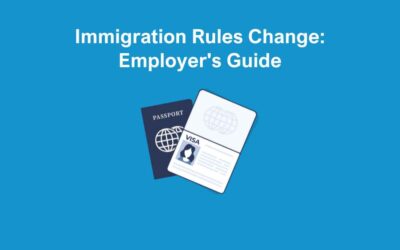You might be thinking about making redundancies in your organisation. Despite Covid-19 and the impact this is having on the economy, you must still comply with UK employment legislation when making staff redundant.
We have recently shared details with you on how to conduct the at Risk Meeting and a consultation meeting – if you didn’t catch these, you can view here.
Pools
Before commencing redundancy consultation, it’s important you consider your “pools”. This means the roles you’re looking to reduce. For example, if you’re looking to reduce the number of Project Managers in your business, everyone doing this role will be in the “pool”. You also need to consider roles that are broadly similar, so it’s important before commencing any redundancy consultation to take advice.
Consultation
You need to consult with employees when you are proposing making redundancies. This involves explaining why the role is being made redundant, explore any alternatives to redundancy and listen to their views.
If you are proposing to make up to 19 redundancies, there are no rules about how you should carry out the consultation or the timeframe. We would still advise you to follow a consultation process, which would involve a series of meetings. In our experience, this can be achieved in less than 30 days, but the key factor is to demonstrate meaningful consultation.
If you are proposing to make 20 or more people redundant, you need to comply with collective consultation. This means you need to consult with nominated employee representatives for a minimum of 30 days. If you’re proposing 100 or more redundancies, the minimum consultation period is 45 days.
You also need to complete an HR1 formwhen proposing 20 or more redundancies.
Collective consultation
Follow these steps.
- You must notify the Redundancy Payments Service (RPS) before a consultation starts. The deadline depends on the number of proposed redundancies. Use the HR1 formto do this.
- Consult with trade union representatives or elected employee representatives – or with staff directly if there are none.
- Provide information to representatives or staff about the planned redundancies, giving representatives or staff enough time to consider them.
- Respond to any requests for further information.
- Give any affected staff termination notices showing the agreed leaving date.
- Issue redundancy notices once the consultation is complete.
Things to consider at Consultation:
- Discuss business reasons as to why you are proposing making redundancies
- The Coronavirus Job Retention Scheme
- Part Time Working/Reduction in hours/flexible working patterns
- Other roles in the organisation
- Reduction in salary which could reduce number of redundancies required
- Opportunities for taking unpaid sabbatical
- Defer any bonus payments due
- Discuss whether any contractual or other employee benefits can be reduced/stopped
- Review discretionary spend and make savings where you can
- Simplify your working processes and reduce costs – ie home working
- Recruitment freeze
- Support available for your employees at risk of redundancy – interviews, outplacement, CV writing etc
Unfortunately, we’re having to help a number of businesses with redundancies at the moment. When consulting about redundancies, it’s important as a Leader that you show empathy, listen to your employee’s views and put yourself in their shoes. In addition, display your company values, do the right thing, and please get advice before starting any consultation process. |
|







